Screening Programme – Sat. 12th Dec 2020:
Programme Notes/Biographies
Freida Abtan – My Heart is a River
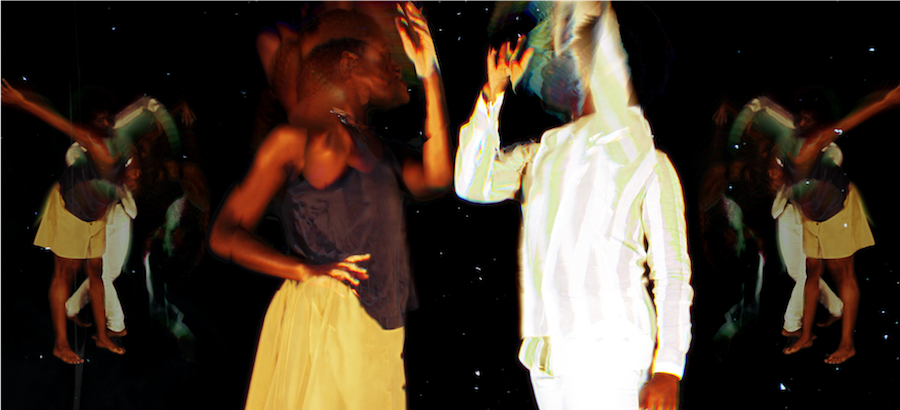
My Heart is a River is a piece for video, live cello and pre-processed musical accompaniment written for Seth Woods by Freida Abtan. Narratively, the piece traces the borders between dreams and identity that collapse within the process of immigration. A cello player begins to perform, and dreams emerge from his instrument. In these, he toasts a friend and together they plan an adventure. After sailing through rough waters riding the cello like a boat, the two friends reach their destination: a star filled expanse where their bodies mirror movement against an invisible barrier.
The piece was a commission from the Seattle Symphony for its 2020 season, where it premiered in the Octave 9 surround audiovisual concert hall. The video being streamed for SeeingSound documents that performance.
Biographies:
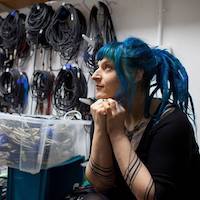 Freida Abtan is a Canadian audiovisual composer and multi-disciplinary artist with a keen interest in immersive media. She works between fixed and real-time computational technologies in sound and video for concert diffusion, installation, and large-scale multimedia performance situations. Her music ranges from acousmatic composition to more industrial and pop-influenced experimental performance. Both as a solo artist, and as a floating member of the renowned experimental music group Nurse with Wound, she has toured her music and visuals internationally. Her compositions, performances, and installations have been featured at ICMC, the Spark Festival of Electronic Music, Mutek, The Elektra Festival, and Cap Sembrat amongst many others. Currently, she leads the Electronic Music, Computing, and Technology programme Bmus/Bsc programme at Goldsmiths, University of London.
Freida Abtan is a Canadian audiovisual composer and multi-disciplinary artist with a keen interest in immersive media. She works between fixed and real-time computational technologies in sound and video for concert diffusion, installation, and large-scale multimedia performance situations. Her music ranges from acousmatic composition to more industrial and pop-influenced experimental performance. Both as a solo artist, and as a floating member of the renowned experimental music group Nurse with Wound, she has toured her music and visuals internationally. Her compositions, performances, and installations have been featured at ICMC, the Spark Festival of Electronic Music, Mutek, The Elektra Festival, and Cap Sembrat amongst many others. Currently, she leads the Electronic Music, Computing, and Technology programme Bmus/Bsc programme at Goldsmiths, University of London.
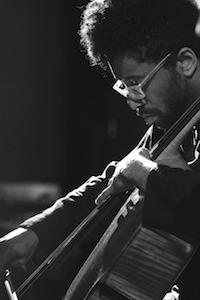
Hailed by The Guardian as “a cellist of power and grace” who possesses “mature artistry and willingness to go to the brink,” cellist Seth Parker Woods has established a reputation as a versatile artist straddling several genres. In addition to solo performances, he has appeared with the Ictus Ensemble (Brussels, BE), Ensemble L’Arsenale (IT), zone Experimental (CH), Basel Sinfonietta (CH), New York City Ballet, Ensemble LPR, Orchestra of St. Luke’s, and the Seattle Symphony. A fierce advocate for contemporary arts, Woods has collaborated and worked with a wide range of artists ranging from the likes of Louis Andriessen, Elliott Carter, Heinz Holliger, G. F. Haas, Helmut Lachenmann, Klaus Lang, and Peter Eötvos to Peter Gabriel, Sting, Lou Reed, Dame Shirley Bassey, and Rachael Yamagata to such visual artists as Ron Athey, Vanessa Beecroft, Jack Early, Adam Pendleton, and Aldo Tambellini.
Woods serves on the performance faculty at the University of Chicago as a Lecturer/Artist in Residence for Cello and Chamber Music. He previously served on the music faculties of Dartmouth College and the Chicago Academy of the Arts, and holds degrees from Brooklyn College, Musik Academie der Stadt Basel, and a PhD from the University of Huddersfield. At present, he is the Artist in Residence with the Kaufman Music Center, and former AiR with Seattle Symphony and the interactive concert hall, Octave 9: Raisbeck Music Center.
Roberto Musanti and No Mos – Petra celata
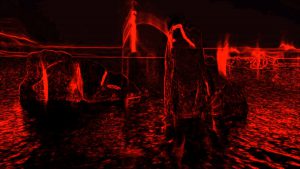
Images are often given an absolute meaning, an undiscussed value.
High definition screens or videocameras which are detecting up to the innermost invisibility are used more and more and are easily available.
This absolute clarity, undoubtedly useful in the scientific or technologic world, is not on the other hand a guarantee for a full understanding of everyday reality.
On the contrary, most of the time, it is used to visualise “the nothingness”.
What if the truth lied in the exact opposite?
What if a blurred, partial, distorted vision would be the most direct way to observe and understand the deepest sense of reality of things ?
“Petra celata” (Hidden rock) investigates this different sensorial approach.
Biographies
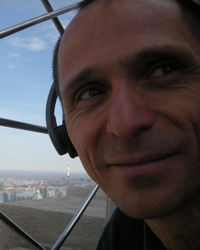 Roberto Musanti is part of the artistic collective “No Mos”, which includes Fabrizio Rizzu (Guitar), Franco Pira (Electronics), Paolo Murgia (Percussion and electronics) and Pino Dolciotti (Bass), has been involved in electronic art since the 1980s as a scholar and author, graduated in electronic music but substantially self-taught, he has held courses in musical and multimedia computer science in the conservatories of Sassari and Cagliari.
Roberto Musanti is part of the artistic collective “No Mos”, which includes Fabrizio Rizzu (Guitar), Franco Pira (Electronics), Paolo Murgia (Percussion and electronics) and Pino Dolciotti (Bass), has been involved in electronic art since the 1980s as a scholar and author, graduated in electronic music but substantially self-taught, he has held courses in musical and multimedia computer science in the conservatories of Sassari and Cagliari.
His works have been featured in various festivals, including: Alghero (Italian Chapter of ACM SIGCHI), Amsterdam (Galleria “Opera Nuda”), Barcelona (Festival “Zeppelin” – CCCB), Belfast (Sonorities Festival of Contemporary Music 2016), Brasilia (Understand Visual Music Conference, Mostra international de video artes, IVAF-International video arts festival), Cagliari (Festivals: “Kontakte”, “Music in touch”, “Spaziomusica”, “Polartist”, “XXI Colloquio di Informatica Musicale”), Ciudad de México (IVAF), Granada (IVAF), Hamburg (Klingt gut! Symposyum on sound 2016), Lisbon (Festival “Musica Viva”), Ljubljana (“Video Evening #4″ – Photon Gallery), Lviv (”MediaDepo”), Marseilles (Festival “Electronicittà”, IVAF), Milan (IVAF), Montevideo – Uruguay (IVAF), Naples (Festival “Evenienze – Konsequenz”), New York (NYCEMF New York City Electroacoustic Music Festival 2016), Rome (“Decennale CEMAT”, Festival “Saturazioni”, “EMUFest” 2010 2012 2013, 2015), Sau Paolo (“Hypersonica” 2012, “File” Festival” 2013, 2015, 2016), Sintra – Portugal (IVAF), Staordshire – England (IVAF), Stockholm (IVAF), Tampa (IVAF), Timisoara (Festival “Simultan” #6 #7 #8 2013, 2015), Viña del Mar – Chile (IVAF).
Jing Wang and Harvey Goldman – Strange Attractors
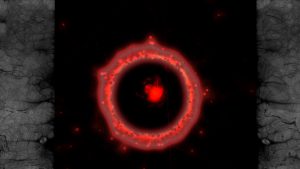
Amid the ineffable uncertain void of Shiva’s gamma annihilation and one grain avalanches, the frenetic and torpid whorl of gluons and muons, shudder and judder upon the soul of Democritus. Heisenberg’s bifurcations, the restless swarming of Yin and Yang are reckoned in the ephemeral pirouettes of Dirac’s space and time.
Strange Attractors was inspired by the study of quantum physics and subatomic particles.
The “visual music” collaborations of Jing Wang and Harvey Goldman attempt to produce a synesthesia like experience. The audience is encouraged to “see” the music and “hear” the visuals. The imagery and audio components are constructed without hierarchy, a true melding of sound and image.
Biographies:
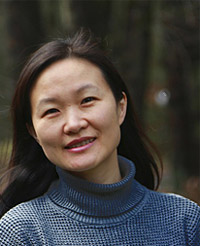 Jing Wang, a composer and virtuoso erhu artist, was born in China. Her compositions have been selected and presented in throughout the world. They have also been recognized by the American Society of Composers, Authors, and Publishers and Electro-acoustic Miniatures International Contest Spain. She was the winner of 2006 Pauline Oliveros Prize and has been awarded the MacDowell Colony Fellowship, the Vilcek Foundation Fellowship, and the Omi International Musicians Residency Fellowship.
Jing Wang, a composer and virtuoso erhu artist, was born in China. Her compositions have been selected and presented in throughout the world. They have also been recognized by the American Society of Composers, Authors, and Publishers and Electro-acoustic Miniatures International Contest Spain. She was the winner of 2006 Pauline Oliveros Prize and has been awarded the MacDowell Colony Fellowship, the Vilcek Foundation Fellowship, and the Omi International Musicians Residency Fellowship.
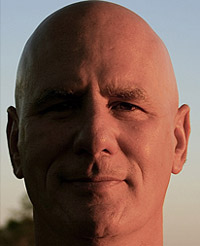 Harvey Goldman has created critically acclaimed work in the fields of ceramics, digital imaging, animation and music. His work has been exhibited widely throughout the United States, Europe and Asia, including, the Smithsonian’s Hirshhorn Museum, the Corcoran Gallery of Art, the White Box Museum, Beijing, China and the Museum of Kyoto, Japan.
Harvey Goldman has created critically acclaimed work in the fields of ceramics, digital imaging, animation and music. His work has been exhibited widely throughout the United States, Europe and Asia, including, the Smithsonian’s Hirshhorn Museum, the Corcoran Gallery of Art, the White Box Museum, Beijing, China and the Museum of Kyoto, Japan.
João Oliveira – Things I have seen in my dreams
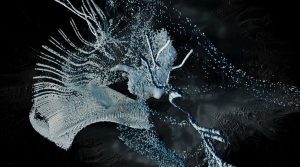
We dream… sometimes we have nightmares, or dreams that makes us sad, anguished, or simply indifferent. But occasionally, there are dreams that project in our mind images and sounds of great beauty. This piece is a recollection and variations on some of these images and sounds I remember from my dreams. It is dedicated to Mario Mary.
Biography:
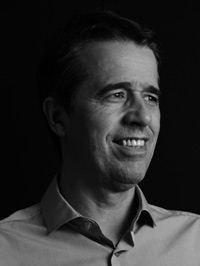 Composer João Pedro Oliveira holds the Corwin Endowed Chair in Composition for the University of California at Santa Barbara. He studied organ performance, composition and architecture in Lisbon. He completed a PhD in Music at the University of New York at Stony Brook. His music includes opera, orchestral compositions, chamber music, electroacoustic music and experimental video. He has received over 50 international prizes and awards for his works, including three Prizes at Bourges Electroacoustic Music Competition, the prestigious Magisterium Prize and Giga-Hertz Special Award, 1st Prize in Metamorphoses competition, 1st Prize in Yamaha-Visiones Sonoras Competition, 1st Prize in Musica Nova competition. He taught at Aveiro University (Portugal) and Federal University of Minas Gerais (Brazil). His publications include several articles in journals and a book on 20th century music theory.
Composer João Pedro Oliveira holds the Corwin Endowed Chair in Composition for the University of California at Santa Barbara. He studied organ performance, composition and architecture in Lisbon. He completed a PhD in Music at the University of New York at Stony Brook. His music includes opera, orchestral compositions, chamber music, electroacoustic music and experimental video. He has received over 50 international prizes and awards for his works, including three Prizes at Bourges Electroacoustic Music Competition, the prestigious Magisterium Prize and Giga-Hertz Special Award, 1st Prize in Metamorphoses competition, 1st Prize in Yamaha-Visiones Sonoras Competition, 1st Prize in Musica Nova competition. He taught at Aveiro University (Portugal) and Federal University of Minas Gerais (Brazil). His publications include several articles in journals and a book on 20th century music theory.
www.jpoliveira.com
Kurz Laurenz Theinert – The Visual Piano
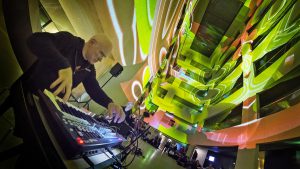
The Visual Piano is an instrument which makes it possible to create moving images in a space. It is unique and was conceived and developed by the photographer and light installation artist Kurt Laurenz Theinert in collaboration with the software designers Roland Blach and Philip Rahlenbeck. Using a MIDI-keyboard it is possible to generate varying graphic patterns which can be digitally projected onto one or more screens. These dynamic and immediate drawings in light are not (as with VJ soft-and Hardware) generated by pre-recorded clips, but every moment of the performance is being played and modulated live and in real time via the keyboard and pedals. Form and content are of one here. The “Visual Piano” performances explore professional contemporary artistic practice through the abstract, ephemeral medium of light, but at the same time they are consciously located in close proximity to the genre of “serious” entertainment.
Biography:
Kurt Laurenz Theinert is a photographer and live performing light and media artist. His „visual piano“ performances are shown all around the world in Sao Paulo, London, Sydney, Berlin, New York and Singapore. He concentrates in his work on visual experiences that do not refer, as images, to anything. On the contrary, he is striving for an abstract, reductiv aesthetic that has ultimately led him – through a wish for more dematerialisation – from photography to light as a medium.
With the aid of software developers Roland Blach and Philipp Rahlenbeck, he has created an ‘image instrument’ (visual piano) on a MIDI-keyboard basis, that allows him to translate his artistic intentions into live performances while configuring time with light.
He creates pure visual music – live, abstract and space filling by using 360° panorama projection. There is no technical link between sound and image to enable a spontaneous dialogue between him and the musician. In his compositions and improvisations, he pries open the static properties of his projection spaces in favour of only those spatial correlations that can be perceived in the dynamics.
Santiago Vilanova – Forms
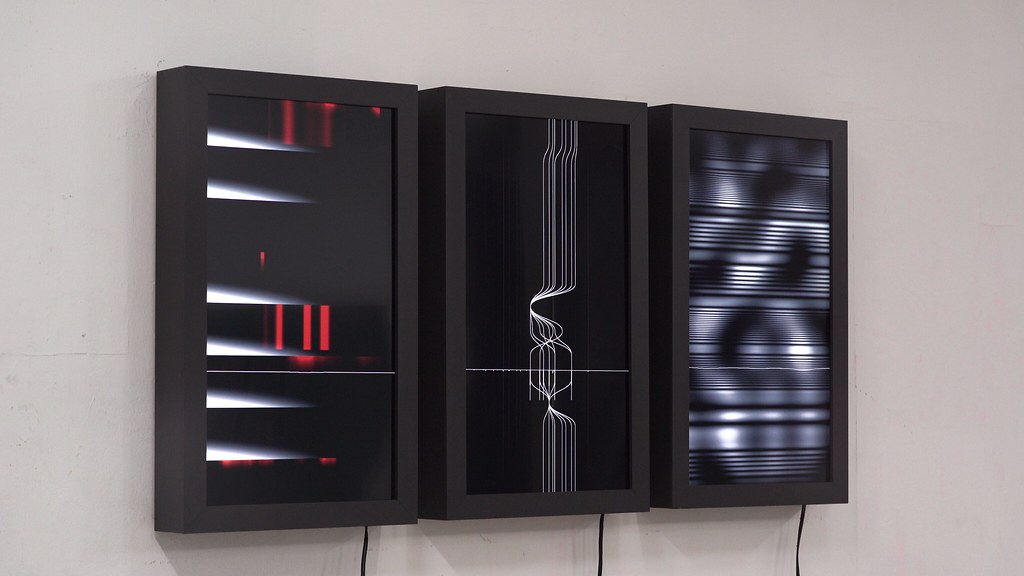
Playmodes is an audiovisual research studio.
A hybrid team of engineers, musicians and designers who work with self-made digital technologies, breathing life into original light and sound instruments. This digital luthierism has led them to apply their creativity to immersive installations, scenography or projection mapping, in a journey outside the square boundaries of traditional screens.
Their deep interest in the relationships between visual and auditory phenomena, as well as their skills in electronic music composition, leads Playmodes to create projects where sound and image are treated as a single matter. In most of their projects, the same streams of data generate both audio and visuals through homemade software, driving the audience into strong synaesthetic perceptions.
Maura McDonnell – Visual Dérive
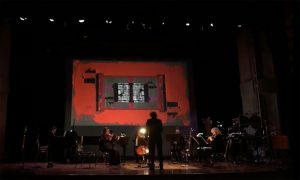
Visual Dérive (2019) is a multi-format work designed for both fixed media or music concert presentations. In this fixed media format, the work is a fully fledged visual music work and it is European premiere screening of the work. The visual has been composed by Maura McDonnell in response to the recording of the music composition Dérive 1 by Pierre Boulez recorded by Ensemble Parallax under the artistic direction of conductor Peynam Farzinpour. The visual response focused on several felt gestural trajectories of moving forms with bursts of dynamic energy at specific points in the music soundtrack. It was crafted over several weeks of a close listening to the music. A sense of continuity was created in the choice of colour, forms and their placement and in the adjusted dynamic energy of all these factors over time to a gentle fading out of all forms and motions to the end. The visual was commissioned by Farzinpour to craft this visual for a series of multimedia concerts being performed by Ensemble Parallax in the US in 2019. The fixed media version compliments the potential of this work and allows a close attention to the visual music art.
Biography:
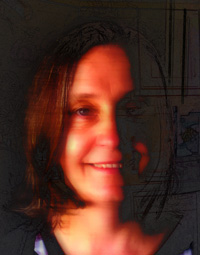 Maura McDonnell is a visual music artist, educator and researcher who has been involved in visual music since 1997. She is assistant professor at Trinity College, Dublin, Ireland and one of the modules she lectures on there is on visual music. Her PhD thesis on ‘Finding Visual Music in its Twentieth Century History’ was completed in early 2019. Her visual music art productions have been screened and presented in music concerts and experimental film festivals in many countries such as Australia, China, Russia, US, UK, Germany, Ireland, Spain, Canada. She also maintains an informal research blog on visual music at http://visualmusic.blogspot.com. Her academic writings have been presented at national and international conferences and symposia and in journals, exhibition and festival catalogues. Maura creates visual music visuals for fixed media and music performances and collaborates with music composers and musicians in her arts practice.
Maura McDonnell is a visual music artist, educator and researcher who has been involved in visual music since 1997. She is assistant professor at Trinity College, Dublin, Ireland and one of the modules she lectures on there is on visual music. Her PhD thesis on ‘Finding Visual Music in its Twentieth Century History’ was completed in early 2019. Her visual music art productions have been screened and presented in music concerts and experimental film festivals in many countries such as Australia, China, Russia, US, UK, Germany, Ireland, Spain, Canada. She also maintains an informal research blog on visual music at http://visualmusic.blogspot.com. Her academic writings have been presented at national and international conferences and symposia and in journals, exhibition and festival catalogues. Maura creates visual music visuals for fixed media and music performances and collaborates with music composers and musicians in her arts practice.
Clovis McEvoy – Pillars of Introspection
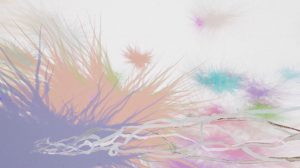
Pillars of Introspection is written for the emerging medium of virtual music.
An immersive, interactive audiovisual experience, the piece is anchored around a self-reflective examination of power; of helplessness and agency. Intrusive thoughts and compulsive desires are given shape and form, immense billows of raw emotion and tumultuous expressions of sound and colour dance and menace – the very environment itself becoming a confronting mirror.
Yet as the balance of power may at times seem fatally tilted, and one’s relation to the world seem set, there come new opportunities for growth, empowerment and peace. Reshaping the world through curiosity, intuition and playful exploration opens a pathway to create a new, harmonious space within oneself and within the experience.
The work is presented as an installation performance, allowing a wider audience to share in an intimate and personal experience. All audio, visuals and interactivity created by the composer.
Biography:
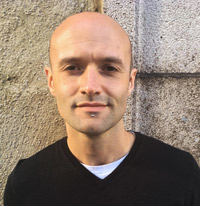 Clovis McEvoy is an award-winning composer, sound artist and researcher currently based in Berlin, Germany.
Clovis McEvoy is an award-winning composer, sound artist and researcher currently based in Berlin, Germany.
Clovis specialises in music for virtual reality, interactive music and works for instruments and electronics. His works have been performed in America, France, England, Italy, South Korea, Australia, New Zealand, Germany, Switzerland and Portugal.
From February-August 2020 Clovis was hosted as the Artist-In-Residence by the TAKT Institute in Berlin, Germany and by DME-Seia at the Serra da Estrela nature reserve, Portugal. Clovis’ most recent project is a collaboration with architectural firm, Pac Studio, on a new virtual reality sound installation that premiered at Ars Electronica’s ‘Aotearoa Garden’ in New Zealand and will be exhibited at the Centre of Contemporary Art, Christchurch from late 2020 to early 2021
Simone Sims Longo – Scorpione
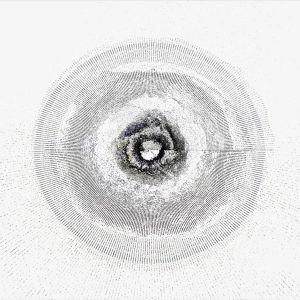
The organic matter, perceived as a figure in space, responds autonomously to self-generated sound stimuli within a free system. The seemingly unknown process through which features materialise operates in our perception with iconic images taken from the long-term memory
Biography:
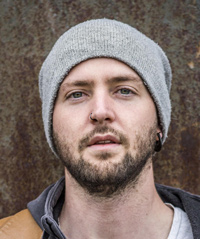 Simone Sims Longo is a composer of electronic music and new media artist. He is interested in creating and processing sound in the digital domain, focused on timbre exploration with different techniques. In his works he often uses a multilevel iteration of sound samples, investigating on asynchronous polyrhythmic texture changes. His sonic identity is characterized by a dry and edgy sound with an emphasis on the extremes of the sound spectrum. Through multichannel speakers diffusion he explores the musical space and exploits the interaction of the sound with architectural elements, fascinated by the natural reverberation. He also focuses his activity on the relation between audio and video in real time, performing acts of visual music that explores the perception of audiovisual phenomena. He obtained a master degree in electronic music at G. F. Ghedini Conservatory of Cuneo.
Simone Sims Longo is a composer of electronic music and new media artist. He is interested in creating and processing sound in the digital domain, focused on timbre exploration with different techniques. In his works he often uses a multilevel iteration of sound samples, investigating on asynchronous polyrhythmic texture changes. His sonic identity is characterized by a dry and edgy sound with an emphasis on the extremes of the sound spectrum. Through multichannel speakers diffusion he explores the musical space and exploits the interaction of the sound with architectural elements, fascinated by the natural reverberation. He also focuses his activity on the relation between audio and video in real time, performing acts of visual music that explores the perception of audiovisual phenomena. He obtained a master degree in electronic music at G. F. Ghedini Conservatory of Cuneo.
Alberto Novello – Reaction Diffusion Scan Processor

This recording explores a novel technique that I developed to fuse the image of an analog CRT monitor with laser projections. The CRT monitor has a monochromatic blue beam that can draw many lines to draw complex shapes, while the laser beam is slower, can only enhance part of the image, but has a colorful and brighter beam. As in most of my work, the sound you hear is the same signal that composes the images, to keep a coherent and synchronous material for both Aural and Visual stimulation.
Biography:
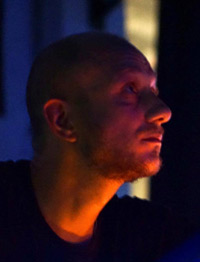 Alberto Novello a.k.a. JesterN is an Italian audiovisual composer and scientist. He repurposes and modifies tools from our analog past: oscilloscopes, early game consoles, analog video mixers, lasers. He is attracted to their intrinsic limitations and strong “personalities”: fluid beam movement, vivid colors, infinite resolution, absence of frame rate and line aesthetics. This is a useful excuse for a retrospective on technologization: what “old” means, and what value the “new” really adds. He exposes the public to the aesthetic differences between digital and analog to reflect on the sociopolitical impact of technology.
Alberto Novello a.k.a. JesterN is an Italian audiovisual composer and scientist. He repurposes and modifies tools from our analog past: oscilloscopes, early game consoles, analog video mixers, lasers. He is attracted to their intrinsic limitations and strong “personalities”: fluid beam movement, vivid colors, infinite resolution, absence of frame rate and line aesthetics. This is a useful excuse for a retrospective on technologization: what “old” means, and what value the “new” really adds. He exposes the public to the aesthetic differences between digital and analog to reflect on the sociopolitical impact of technology.
His works have been presented at Centre Pompidou in Paris, Museo Reina Sofia Madrid, Amsterdam Dance Event, Venice Biennale, New York Computer Music Festival, Bozar Bruxelles, BOA Biennale Porto, Rewire Festival Den Haag, Glasgow Contemporary Art Center, Dom Moskow, Seoul International Music Festival, to mention a few. He graduated in Nuclear Physics at the University of Trieste, completed the master in Art Science with Jean Claude Risset, a PhD degree at the Technische Universiteit Eindhoven and graduated at the Institute of Sonology, Royal Conservatory of Den Haag. He has assisted Alvin Lucier, David Behrman, Nicholas Collins and Trevor Wishart. He has improvised with Evan Parker, Butch Morris, Karl Berger and was invited professor at Sussex University, MICA Baltimore, SAIC Chicago, Tallin University, Den Haag Conservatory, Turin Conservatory, IEM Graz, Champaign-Urbana University, CMMAS Mexico among others. He worked at Philips Research, Eindhoven, and Auro Technologies Belgium creating software for their audio applications.
Gerald Gormley – Burner
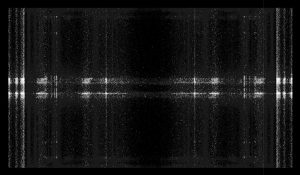
Burner was developed as a live performance composition for violin, percussion, tape and visual score. The score itself, which was projected onto a wall, also doubled as the lighting system for the gallery space in which the piece was performed. The gallery was in total darkness, performers barely visible to the audience except for intermittent illumination caused by the flickering white light of the projected score.
The piece was staged in such a fashion to highlight the fragmented nature of interpretation between composer, performer and audience. In light of current live performance restrictions due to the pandemic, we have experienced different and novel approaches to reaching audiences in new ways. This adds another layer of detachment between composer and audience, although it also offers a rich opportunity for sonic and visual experimentation.
This video version of Burner, which only shows the illuminated score on the screen, is an unintended but necessary new method of disseminating a work that was originally intended as an immersive live performance.
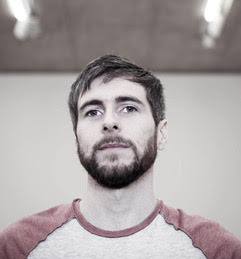 Biography:
Biography:
Gerard Gormley (aka being strangers) creates noise-based works that explore concepts of microsound. He works in electroacoustic music, audiovisual installation, and sound design for film. In addition to his work as a composer, he is active as a sound engineer in live performance and studio recording contexts. Gerard was awarded a PhD in composition from Queen’s University Belfast, and he is currently a Senior Lecturer in Music at Buckinghamshire University.
Derek Holzer – Ocular Pathogen Transmission
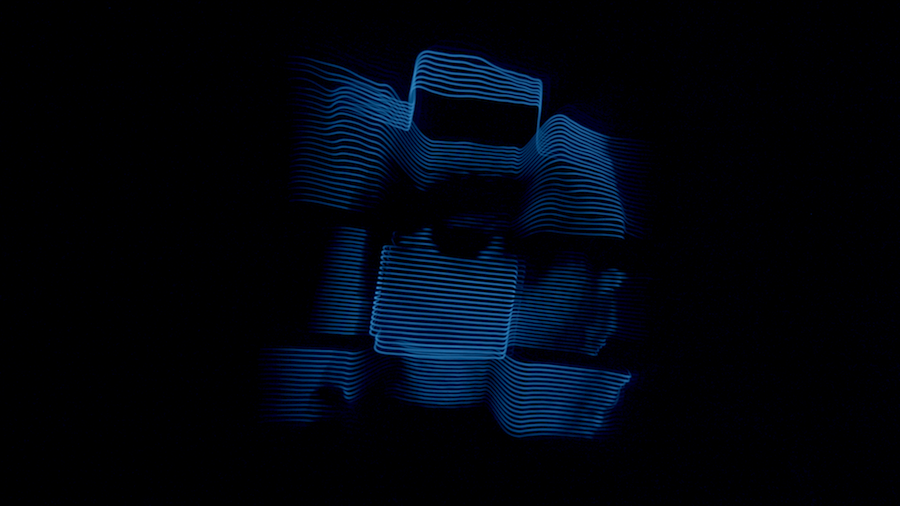
“Ocular Pathogen Transmission” uses my Vector Synthesis library for the Pure Data programming environment to perform classic Rutt-Etra style scan processing on a photographic image, which is then rendered as three audio signals (horizontal, vertical, brightness) sent to a 1980’s Vectrex vector game console. The video features new ripple [z = sin(sqrt(x²+y²))] and block effects written specifically for this work. The audio track is the horizontal and vertical signals processed through a selection of hand-made analog synthesizers and effects. The work was filmed directly from the Cathode Ray Tube with no further edits beyond the titles in Helsinki just before the scope of the global pandemic made itself clear. I envisioned this work in homage to Woody Vasulka, who passed on from our Earthly dimensions in late 2019.
Biography:
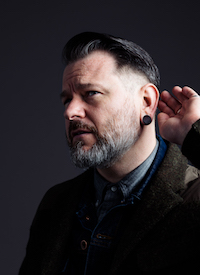 Derek Holzer (USA 1972) is an audiovisual artist, researcher, lecturer, and electronic instrument creator based in Stockholm. He has performed live, taught workshops and created scores of unique instruments and installations since 2002 across Europe, North and South America, and New Zealand. He is currently a PhD researcher in Sound and Music Computing at the KTH Royal Institute of Technology in Sweden, focusing on historically informed sound synthesis design. Photo credit: Ilkka-Saastamoinen
Derek Holzer (USA 1972) is an audiovisual artist, researcher, lecturer, and electronic instrument creator based in Stockholm. He has performed live, taught workshops and created scores of unique instruments and installations since 2002 across Europe, North and South America, and New Zealand. He is currently a PhD researcher in Sound and Music Computing at the KTH Royal Institute of Technology in Sweden, focusing on historically informed sound synthesis design. Photo credit: Ilkka-Saastamoinen
Leon Eckard – Myse en Abyme
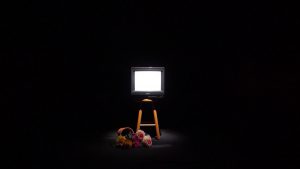
What is light and what is sound? Where are the borders of our perception and do our senses really represent reality? In the video installation “Myse en Abyme” the medium becomes the object and represents itself. In an endless recursive loop, the video decomposes into its individual parts, which in turn are the whole video. Thereby the illusion of every video image is revealed, which are basically a variation of three colors. The same happens with the sound. With the human ear rhythm is at a certain frequency perceived as pitch. The same applies the other way around. The music decomposes synchronous to the image in its rhythmic individual parts, which again consist of the whole composition. The idea for this work is to gain consciousness about the technical but also the contentual illusions of image and sound, their connection and analogy and to advance towards the question of reality. Furthermore, the television represents our own limited perception of the world. How reality is displayed to us, is not necessarily what its true nature is. If we want to look beyond our perception, we can see how the world around us consist of smaller parts. But we cannot exit our subjective view into an objective reality and therefore, we will eventually end up again in our limited representations of reality.
Biography:
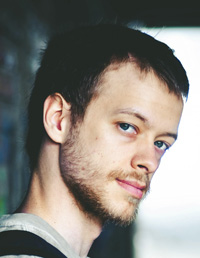 Leon Eckard (*1995 in Neuss) studies since 2015 Music and Media at the Institut for Music and Media in Düsseldorf. His artistic field developes between visual art and music. In early 2018 he created his virtual reality exam project “Relativity” in the Visual Music major, which was then exhibited in the context of the exhibition “Von Fremden Ländern in eigenen Städten”. In 2019 he created during his art scholarship at the Onomatoverein in Düsseldorf his VR work “Shepard Room” which was exhibited in April 2019 at the exhibition “Technische Probleme”. After his semester abroad in Barcelona in the field of design and media art he developed his VR work “Blind Spot”, which he showed in February 2020 at Kunstpalast at the event “Palastrauschen”. Also, in this month he exhibited his work “Mise en Abyme” at Filmwerkstatt Düsseldorf at the event “Visual Music Studies”, which will be exhibited as well in December 2020 at Technische Sammlungen Dresden at the exhibition “Mind over Matter”. In his works, Leon Eckard deals with subjective perception and the question of reality. Thereby the connection of music and image and their mutual interference are always present. Besides his practice as an Artist, he also works as composer and guitarist.
Leon Eckard (*1995 in Neuss) studies since 2015 Music and Media at the Institut for Music and Media in Düsseldorf. His artistic field developes between visual art and music. In early 2018 he created his virtual reality exam project “Relativity” in the Visual Music major, which was then exhibited in the context of the exhibition “Von Fremden Ländern in eigenen Städten”. In 2019 he created during his art scholarship at the Onomatoverein in Düsseldorf his VR work “Shepard Room” which was exhibited in April 2019 at the exhibition “Technische Probleme”. After his semester abroad in Barcelona in the field of design and media art he developed his VR work “Blind Spot”, which he showed in February 2020 at Kunstpalast at the event “Palastrauschen”. Also, in this month he exhibited his work “Mise en Abyme” at Filmwerkstatt Düsseldorf at the event “Visual Music Studies”, which will be exhibited as well in December 2020 at Technische Sammlungen Dresden at the exhibition “Mind over Matter”. In his works, Leon Eckard deals with subjective perception and the question of reality. Thereby the connection of music and image and their mutual interference are always present. Besides his practice as an Artist, he also works as composer and guitarist.
Antenor Ferreira and Isabel Pérez del Pulgar – El Bosque Hechizado
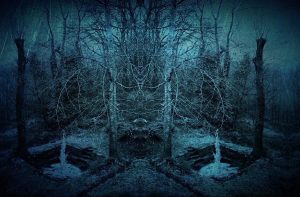
“El Bosque Hechizado”: the forest is in perpetual change and rebirth. It is a place where life cycles are filled with mystery, beauty and cruelty. Its movement and sound have been the basis of a world of phantasmagoria. Its interior architecture, its fragmented illumination, and its layers of superimposed realities have been treated as analogies of the human psyche itself. In this forest, you can find the tree and the source of life, mystical creations to exorcise death, pain and illness.«The true forest is made up of the trees that I do not see» (Ortega y Gasset).We can never see together the whole immensity of the forest. These are successive layers that are discovered as soon as one advanced inside it. Layers of realities that follow each other and overlap forming a fragmented internalization of their reality. “The forest will go rotting, shelling out, in a series of visible pieces. But I will never find it anywhere I am. The forest flees from the eyes” (Ortega y Gasset). Primal place where all forces have a place in a perpetual battle of balance, and where different forms of life are interrelated for their survival. Looks like a body, mirror of the human inner nature itself.
Biographies:
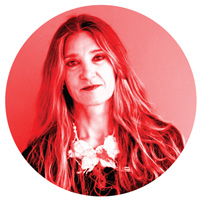 Isabel Pérez del Pulgar: her artistic works in the fields of painting, photography, and especially her work in video art and short film, have been selected for numerous international exhibitions. Among her recognitions: Award for the best audiovisual creation work in “5th edition of the European Audiovisual Creation Contest CTL 59“ (2018); 2nd prize at 2nd International Biennial of Video Art and Animation (VEA) Puebla, Mexico (2016). http://isaperezdelpulgar.blog-spot.com/
Isabel Pérez del Pulgar: her artistic works in the fields of painting, photography, and especially her work in video art and short film, have been selected for numerous international exhibitions. Among her recognitions: Award for the best audiovisual creation work in “5th edition of the European Audiovisual Creation Contest CTL 59“ (2018); 2nd prize at 2nd International Biennial of Video Art and Animation (VEA) Puebla, Mexico (2016). http://isaperezdelpulgar.blog-spot.com/
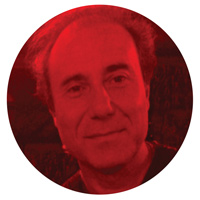 Antenor Ferreira: composer, percussionist, researcher, curator, and associate professor at University of Brasília (Brazil). Holds PhD in music composition and accomplished Post-doctoral research at Universidad de Granada (2019) and University of California, Riverside (2014). He has launched two CDs and produced the DVD Electroacoustic Music in Brasil. Currently, he coordinates the MediaLab – Laboratory of Research in Computational Art with the intent to establish collaborative research with international institutions in the field of art and technology. www.antenor.mus.br
Antenor Ferreira: composer, percussionist, researcher, curator, and associate professor at University of Brasília (Brazil). Holds PhD in music composition and accomplished Post-doctoral research at Universidad de Granada (2019) and University of California, Riverside (2014). He has launched two CDs and produced the DVD Electroacoustic Music in Brasil. Currently, he coordinates the MediaLab – Laboratory of Research in Computational Art with the intent to establish collaborative research with international institutions in the field of art and technology. www.antenor.mus.br
Daniela de Paulis – Cogito in Space
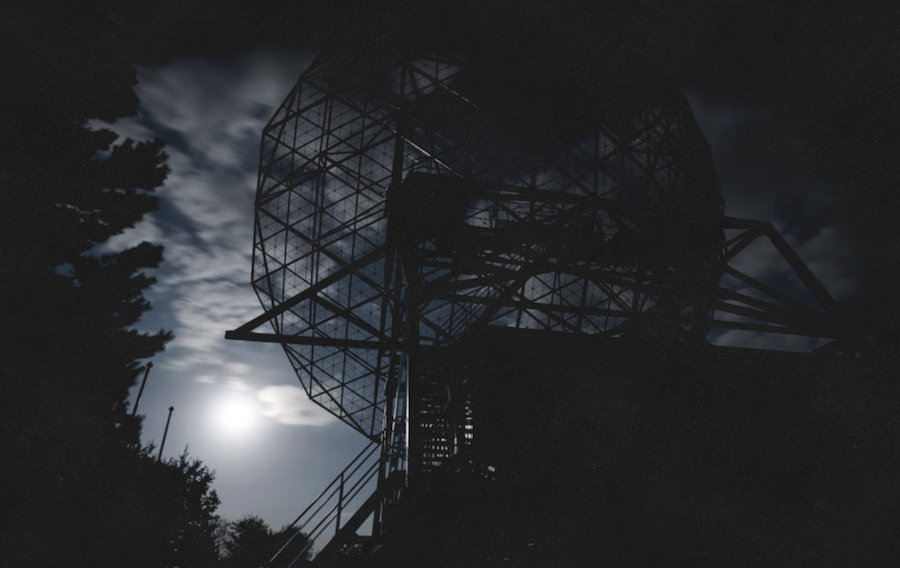
COGITO is an interdisciplinary hybrid narrative sending thoughts into outer space as radio waves. The project is staged at the Dwingeloo radio telescope in The Netherlands.
One visitor at the time enters the cabin of the radio telescope and sends her or his brain activity into the cosmos while viewing an immersive video of the Earth seen from space.
Biography:
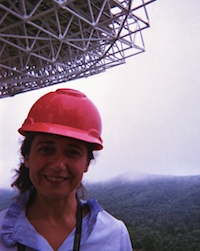 Daniela de Paulis is a former contemporary dancer, a trans-disciplinary artist, a licensed radio operator and radio telescope operator. From 2009 to 2019 she has been based at the Dwingeloo radio telescope, where she has developed the Visual Moonbounce technology and a series of innovative projects combining radio technologies with live performance art and neuroscience. Since 2010 she has been collaborating with a number of international organisations, including Astronomers Without Borders, for which she is the founder and director of the arts programme. She is member of the IAA SETI (Search for Extraterrestrial Intelligence) Permanent Committee. She is the recipient of the Baruch Bloomberg Fellowship in Astrobiology at the Green Bank Observatory where she will develop an art-science project in 2021. She is a regular host for the Wow! Signal Podcast. She has published her work with the Leonardo MIT Journal, Inderscience, Springer, Cambridge University Press and RIXC amongst others.
Daniela de Paulis is a former contemporary dancer, a trans-disciplinary artist, a licensed radio operator and radio telescope operator. From 2009 to 2019 she has been based at the Dwingeloo radio telescope, where she has developed the Visual Moonbounce technology and a series of innovative projects combining radio technologies with live performance art and neuroscience. Since 2010 she has been collaborating with a number of international organisations, including Astronomers Without Borders, for which she is the founder and director of the arts programme. She is member of the IAA SETI (Search for Extraterrestrial Intelligence) Permanent Committee. She is the recipient of the Baruch Bloomberg Fellowship in Astrobiology at the Green Bank Observatory where she will develop an art-science project in 2021. She is a regular host for the Wow! Signal Podcast. She has published her work with the Leonardo MIT Journal, Inderscience, Springer, Cambridge University Press and RIXC amongst others.
Thomas Butler – Coordinates for cello (2019/20)
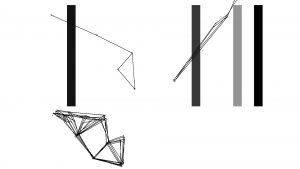
Presented as a video work, Coordinates is a composed, animated map detailing the physicality of playing the cello. Conceived as a “duet” for cellist and physically-modelled piano, the piece contrasts the necessary muscular effort of the human and the “weightlessness” of the virtual instrument.
The cello part originated in simple motion capture techniques: a small palette of repeated physical gestures are broken down, stretched/contracted and recombined to form the musical material. This sonic material is therefore a consequence of physical movement, rather than the other way around. These physical gestures are represented in the animated video; the line and dot drawings describe the shape of the cellists arms, torso, and bowing direction, etc.
Conversely, the piano part is realized digitally: not only would the piano part be impossible to perform on a real instrument, but the virtual piano itself is constantly changing shape to generate specific timbres.
The video work features cellist Emily De Simone. It was premiered in a live version at the CCA, Glasgow, in June 2019, and in video form as part of the Being Human festival 2020.
Biographies:
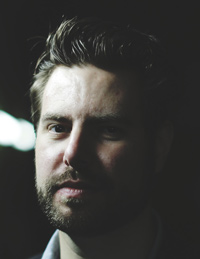 Thomas Butler is a composer based in Glasgow, Scotland. He uses mapping techniques, found and archival sound, video and physical gesture to explore themes of sustainability, psychogeography and technology through instrumental and electronic work. Thomas holds a PhD in composition from the University of St Andrews. Recent work includes: Sandglass, a commission from Sound Festival and DanceLive; Aeolian Survey, conceived on a residency at the Banff Centre, Alberta; Lament for cellist Robert Irvine’s recent CD on Delphian Records; Limnology (Slims River) for Red Note Ensemble at the Lammermuir Festival; and Karlsruhe Survey, conceived on a residency at ZKM, Center for Art and Media Karlsruhe. He teaches composition at the University of Edinburgh and is a director of new music group Ensemble Thing.
Thomas Butler is a composer based in Glasgow, Scotland. He uses mapping techniques, found and archival sound, video and physical gesture to explore themes of sustainability, psychogeography and technology through instrumental and electronic work. Thomas holds a PhD in composition from the University of St Andrews. Recent work includes: Sandglass, a commission from Sound Festival and DanceLive; Aeolian Survey, conceived on a residency at the Banff Centre, Alberta; Lament for cellist Robert Irvine’s recent CD on Delphian Records; Limnology (Slims River) for Red Note Ensemble at the Lammermuir Festival; and Karlsruhe Survey, conceived on a residency at ZKM, Center for Art and Media Karlsruhe. He teaches composition at the University of Edinburgh and is a director of new music group Ensemble Thing.
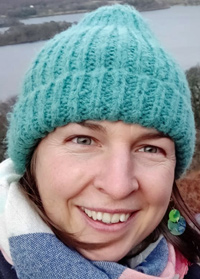 Emily De Simone is an educator, performer and somatic practitioner based in Aberdeen. Since 2007 she has been active as a cellist performing with all the major Scottish orchestras, the Alba Quartet, and new music groups such as Red Note Ensemble, Auricle Ensemble and Ensemble Thing.
Emily De Simone is an educator, performer and somatic practitioner based in Aberdeen. Since 2007 she has been active as a cellist performing with all the major Scottish orchestras, the Alba Quartet, and new music groups such as Red Note Ensemble, Auricle Ensemble and Ensemble Thing.
In recent years, alongside her embodied practices such as Feldenkrais and Listening Space she has been increasingly interested in making, composing and curating new music located between her performance practice as a cellist and her interests in personal and global wellbeing.
Brigid Burke – Gluttonous Wabling)
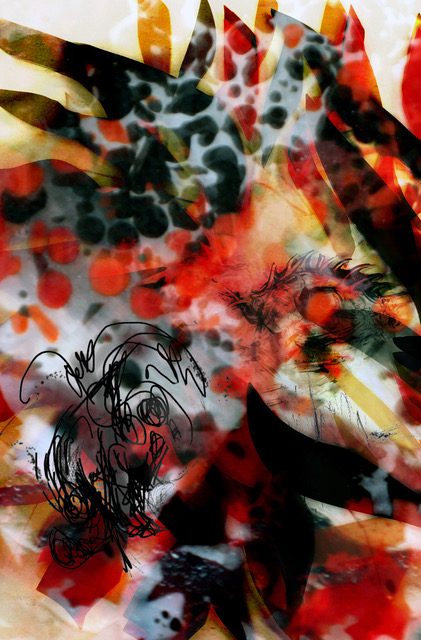 This work is an artistic fusion of original artwork, graffiti, techno, noise, train rides and eyes with percussive instrumentalists, video mixing and Audio Mulching. Footage throughout the visuals has been shot on train rides, Graffiti from Berlin and Melbourne Australia. This footage is combined with my original line drawings and eyes, which are computer processed and iPad animated drawings with overlaid still photography. The audio and visuals take you on an abstract journey of the activity of current cultures in Western urban places.
This work is an artistic fusion of original artwork, graffiti, techno, noise, train rides and eyes with percussive instrumentalists, video mixing and Audio Mulching. Footage throughout the visuals has been shot on train rides, Graffiti from Berlin and Melbourne Australia. This footage is combined with my original line drawings and eyes, which are computer processed and iPad animated drawings with overlaid still photography. The audio and visuals take you on an abstract journey of the activity of current cultures in Western urban places.
 Biography:
Biography:
Brigid is an Australian composer, performance artist, clarinet soloist, visual artist, video artist and educator whose creative practice explores the use of acoustic sound and technology to enable media performances and installations that are rich in aural and visual nuances. Her work is widely presented in concerts, festivals, and radio broadcasts throughout Australia, Asia, Brazil, Europe and the USA.
She co-curates SEENSOUND with Mark Pedersen a monthly visual music series sponsored by LOOP Melbourne Australia. seensound.com. Also, most recently she has presented her works at Federation Square Melbourne, Tilde Festival, ABC Classic FM. ICMC International Computer Music Conference, Sound-Image Festivals Greenwich UK, Echofluxx Festivals Prague, GA Generative Arts Festivals Italy, Asian Music Festivals in Tokyo, The Melbourne International Arts Festival, Futura Music Festival Paris France, Mona Foma Festival Hobart, The International Clarinet Festivals in Japan and Canada also Seoul and Australian International Computer Music Festivals. She has a PhD in Composition from UTAS and a Master of Music in Composition from The University of Melbourne.
Timothy Moyers – Golden Cuttlefish
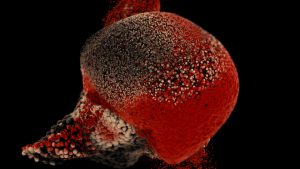
This piece is an audiovisual reinterpretation of my older audio piece “Linoleum”. The sound material for the piece was generated by sonifying a PDF document of an old Pro-Tools manual. The synthetic nature of the audio is reflected in the visual component.
Biography:
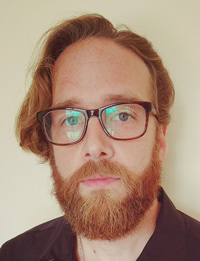 Timothy Moyers is a composer and audio-visual artist originally from Chicago. He is an Assistant Professor of Music Theory and Composition at the University of Kentucky where oversees the Electroacoustic Music Studios. Prior to joining the University of Kentucky, Timothy was an Assistant Professor in the Department of Human Centered Design at IIIT-D (Indraprastha Institute of Information Technology), Delhi, India where he was the Founder & Director of ILIAD, Interdisciplinary Lab for Interactive Audiovisual Development, and GDD Lab, Game Design and Development Lab. He completed his PhD in Electroacoustic Composition from the University of Birmingham (England), an MM in New Media Technology from Northern Illinois University (USA), a BA in Jazz Performance and a BA in Philosophy from North Central College (USA).
Timothy Moyers is a composer and audio-visual artist originally from Chicago. He is an Assistant Professor of Music Theory and Composition at the University of Kentucky where oversees the Electroacoustic Music Studios. Prior to joining the University of Kentucky, Timothy was an Assistant Professor in the Department of Human Centered Design at IIIT-D (Indraprastha Institute of Information Technology), Delhi, India where he was the Founder & Director of ILIAD, Interdisciplinary Lab for Interactive Audiovisual Development, and GDD Lab, Game Design and Development Lab. He completed his PhD in Electroacoustic Composition from the University of Birmingham (England), an MM in New Media Technology from Northern Illinois University (USA), a BA in Jazz Performance and a BA in Philosophy from North Central College (USA).
Beth Warshafsky – Super Worm Moon
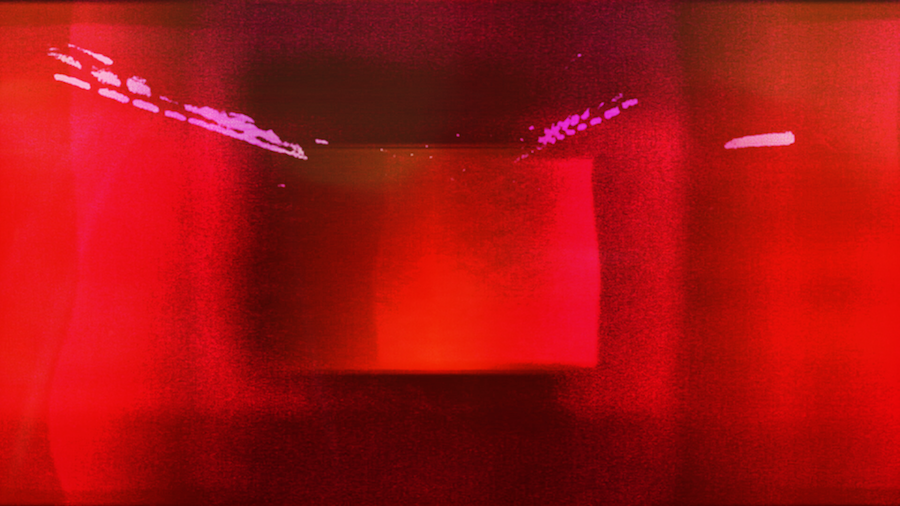
“Super Worm Moon” is a new collaboration between the band portal iii and the visual artist Beth Warshafsky. It was recorded on a super worm moon in March 2020. As a trio of musicians with a broad range of tastes and playing styles, the band portal iii was formed as a way to focus on their shared mutual interest in drone and ambient music. Inspired by the teachings of Pauline Oliveros, the music invites the listener to become immersed and transported to the edge of consciousness. The sound structure and the length of the piece influenced the approach to creating visuals elements, which took shape through multiple processes over time. In many ways the visual material was composed granularly in context to the sound, almost as if painting in time. Working through layers of color, texture, shape and image, the image and sound come together in a way which creates a relationship between abstract and narrative content.
Biography:
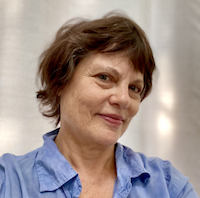 Beth Warshafsky is a NYC-based artist and teacher working in multiple mediums and practices including video and digital moving images, live projection, prints, drawings, artist’s books, photographs and text. Beth’s artwork has been shown in numerous venues including the International Short Film Festival in Hamburg; Follow the Sound Jazz Festival, Antwerp, Belgium; Guelph Jazz Festival & Nuit Blanche, Ontario, Canada :The Tricky Woman’s Animation Festival, Vienna, Australia, The BITT Festival, Seoul, Korea, The 9th Korea Experimental Arts Festival, the 5th International Digital Art Exhibit and Colloquium in Havana Cuba; and in group shows in New York, Connecticut, London, Brazil, Israel, Korea, Ohio, Los Angeles and Washington State. Her live-video collaborations with Gerry Hemingway include Roulette, the Stone, The Cell and Spectrum in New York and the Kleintheater in Lucerne, Switzerland.
Beth Warshafsky is a NYC-based artist and teacher working in multiple mediums and practices including video and digital moving images, live projection, prints, drawings, artist’s books, photographs and text. Beth’s artwork has been shown in numerous venues including the International Short Film Festival in Hamburg; Follow the Sound Jazz Festival, Antwerp, Belgium; Guelph Jazz Festival & Nuit Blanche, Ontario, Canada :The Tricky Woman’s Animation Festival, Vienna, Australia, The BITT Festival, Seoul, Korea, The 9th Korea Experimental Arts Festival, the 5th International Digital Art Exhibit and Colloquium in Havana Cuba; and in group shows in New York, Connecticut, London, Brazil, Israel, Korea, Ohio, Los Angeles and Washington State. Her live-video collaborations with Gerry Hemingway include Roulette, the Stone, The Cell and Spectrum in New York and the Kleintheater in Lucerne, Switzerland.
portal iii features a trio of veteran Minnesota musicians; bassist Liz Draper (who’s played with everyone from the Grammy Award-winning Okee Dokee Brothers to the Balkan folk group Orkestar Bez Ime), folk traveler, songwriter and guitarist Charlie Parr and Chris Gray drummer from doom project Up the Mountain Down the Mountain. With the three of them sharing a broad range of tastes and playing styles, anything was possible, but it was a need to seek out new sonic territory that led them to create portal iii.
Tonalli R. Nakamura – Catalysts
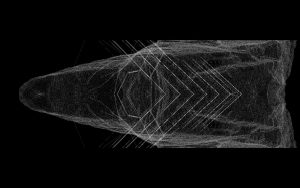
Catalysts work by providing an (alternative) mechanism involving a different transition state and lower activation energy. Consequently, more molecular collisions have the energy needed to reach the transition state. Hence, catalysts can enable reactions that would otherwise be blocked or slowed by a kinetic barrier. In the presence of a catalyst, less free energy is required to reach the transition state, but the total free energy from reactants to products does not change.
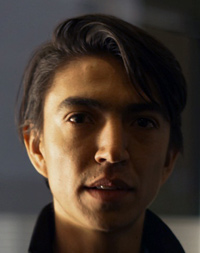 Biography:
Biography:
Specialist in music with new technologies: acoustic music, contemporary instrumental music, Visual Music and live electronics. He has studied with outstanding composers such as: Hebert Vazquez, German Romero, Horacio Uribe, Mauricio Valdez, João Pedro Oliveira, Ricardo Climent, Ken Ueno, Kevin Patton and Klaus Filip. He has presented and premiered work at festivals around the world, in countries such as Spain, France, Greece, China, Japan, Russia, Scotland, Ireland, England, Germany,
Belgium, Canada, Argentina, Colombia, Chile and Mexico
Dot Product – TV/AV
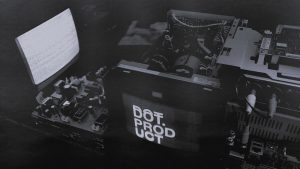
Comprised of Berlin based sound artists Adam Winchester and Christopher Jarman, and visual artist Pablo Iglesias (Geso), Dot Product comes to light in a swathe of noise,tone and texture.
Through years of research and experimentation Winchester and Jarman have soughtto explore the creative potential from the inaudible fog ofelectromagnetic radiation, the internal resonancefound in the negativespace of an object, the circuitry of discarded electronics, and othersuch less-travelled paths of sound generation. In harnessing theseclandestine sonicsand bringing them within a listenable range, theresulting collages of sound have been shaped into a form that nods tothe legacy of uncompromising British experimentalelectronic music, fromearly industrial savagery to bass-heavy soundsystem pressure.
After two albums released on Osiris Music, variouscollaborations with the likes of The BBC Radiophonic Workshop, Japanoise artist KK Null,and Renate Knaup of Amon Düül II, and plenty ofintense performances across some of the best festivals and clubs worldwide,2019 marks the starting point of a new advancement in Dot Product’s career. Redeveloping the project into a complete audiovisual live concept with the incorporation of their new member: Geso.
Dot Product’s visual concept takes this dialog between analog and digital toolsand turns it into a real time visual experiment, using a CRTTV and different virtual and real layerscombined to produce an AV experience that deceives and reprograms reality. Geso’s previous research in visual music and synaesthesia applied to live performing become the perfect ground for a sonic force that needs a proper visual response.
Biographies:
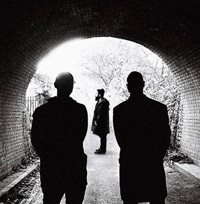 ADAM WINCHESTER Winchester is an electronic music producer and performer from Bristol, UK. Previously immersed in the early days of the Bristol dubstep sceneas Wedge, he made his mark producing glitchy, left of centre bass music that he released on a number of revered labels before setting up hisown underground imprint ‘If Symptoms Persist’. Alongside fellow Bristol dubstep pioneers Appleblim, Gatekeeper and Addison Groove, Wedgewent on to tour the world smashing up dancefloors internationally with his own unique take on the genre. Since then he has released musicunder a number of different guises in a range of genre’s including techno, house, ambient and industrial, but always with an unexpected twistthat captivates his listeners, truly setting him apart from his contemporaries.
ADAM WINCHESTER Winchester is an electronic music producer and performer from Bristol, UK. Previously immersed in the early days of the Bristol dubstep sceneas Wedge, he made his mark producing glitchy, left of centre bass music that he released on a number of revered labels before setting up hisown underground imprint ‘If Symptoms Persist’. Alongside fellow Bristol dubstep pioneers Appleblim, Gatekeeper and Addison Groove, Wedgewent on to tour the world smashing up dancefloors internationally with his own unique take on the genre. Since then he has released musicunder a number of different guises in a range of genre’s including techno, house, ambient and industrial, but always with an unexpected twistthat captivates his listeners, truly setting him apart from his contemporaries.
CHRISTOPHER JARMAN Jarman has 20 years professional music industry experience which has led to a variety of musical personas across many genres as KamikazeSpace Programme, Dot Product and Raiden. He has amassed over 150 vinyl releases. As Kamikaze Space Programme, Christopher releasestechno music on Luke Slater’s Mote Evolver label, Bas Mooy’s MORD and Simon Shreeve’s Osiris music. He is a regular DJ at Berghain,Tresor and regularly tours, playing at the most respected clubs all over the world. In the past Christopher released music Raiden and becamea major player on the worldwide Drum and Bass scene, signing to Renegade Hardware plus releasing tracks for Hospital Records and his ownOffkey and Voodoo labels. He also has been featured in a variety of worldwide music press articles and contributed a production masterclassfilm to the popular Computer Music magazine cover disc, has ran 2 successful record labels and a mixing and mastering company.
GESO (PABLO IGLESIAS) Also known as Pablo IA, he is an active creative mind involved in different art and design fields. Geso is the moniker he uses for his mostpersonal and actual work, specially focused in visual music, art installations and art direction for music projects. He also worksas graphic designer and art director for GeeOhDee studio, and in the past was publisher and curator for Belio Magazine, an art publishinghouse and organization who ran exhibitions, concerts, festivals, conferences and workshops. Among a long list of visual performances andcollaborations with musicians he recently performed with live drummer Andrea Belfi at Day 0 – Krake Festival (Berlin 2018), showcased hiswork at Teorema Festival in Super Deluxe (Tokyo, 2018) and participated in the celebration of Piano Day (Waterford, 2018). His work has beenwidely shown at galleries, festivals and exhibitions such as Berlin Atonal, Adobe Creative Cloud Launch Event, File Hipersonica, KrakeFestival, Berlin Art Week, In-sonora, Maschinenfest, Applied Sound Arts, CutOut Fest, etc.
Paul Jebanasam – silently out of the night

silently out of the night depicts an encounter with atmospheric phenomena through shadow, light and sound. Oceanic forms cast a turbulent ether to create a space where air and light appear as one primordial material.
Paul Jebanasam is a lecturer in music technology at Bath Spa University. He is currently a doctoral student in composition at the Centre for Research in New Music (CeReNeM,UK) at the University of Huddersfield.